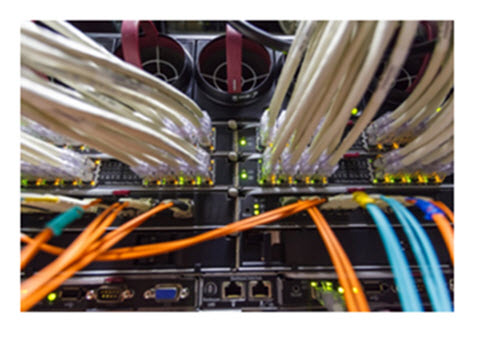Last Updated: September 13th, 2018
When you move your server room to a data center, one of the key components of the monthly bill is the amount of bandwidth you use. In most cases, bandwidth usage charges stay consistent from month to month. However, there may be times when bandwidth usage spikes — or the charges seem much higher than they should be. In some cases, if you have negotiated a monthly bandwidth package, going over your allotted amount will lead to high fees and other charges. Sometimes it’s obvious why your company is using extra bandwidth. When a blog post goes viral, for example, or if you launch a major marketing campaign that exceeds expectations, the increased traffic to your site will eat up bandwidth. Often, though, the cause for the sudden increase isn’t so obvious, but usually, it’s due to one of several factors.
The Most Common Causes for Bandwidth Usage Spikes

If your servers eat up more bandwidth because of something like a viral post or better marketing you probably aren’t very concerned. The excess charges are usually minor compared the benefits of the increased traffic.
If you’re using large amounts of bandwidth for other reasons, though, you might not be as blasé about the increased bill. That’s why it’s important to watch for sudden and unexpected increases, as they may be caused by issues that you can easily correct, such as:
Malware- If the word malware makes you cringe, it should. Not only does malware present a security is, it can also chew up your bandwidth and cause major data charges by tuning your servers into bots.
Poor Backup Strategy – Backups are important, but backing up your entire network every day, or specifying synchronous backups for every single application can eat up bandwidth faster than you can hit “save.”
Poor Update Strategy- Updates are also vital to maintaining security and the function of vital programs, but if you aren’t centralizing the backup process, you could eat up bandwidth.
Unmanaged Remote Connections- One of the benefits of using a data center is that employees can log in to virtual machines from anywhere, anytime they need to. However, many people opt to simply stay logged in and maintain that connection to avoid having to go through the authentication process every time they want to work. Staying logged in, though, uses bandwidth since it can require as much as 1 Mbps to maintain the connection. When it’s just one person staying connected, it’s probably not going to make much of a difference. But when several dozen — or more people — don’t log out, then the usage and costs go up.

Keeping Bandwidth Usage in Check
Now that you know some of the causes of excessive bandwidth usage in the data center, how do you stop them and control costs?
Before you look at ways of reducing bandwidth use, it’s also important to look at how data centers bills clients. The most common form of billing is the 95th percentile method, which calculates the charges by averaging your usage 95 percent of the time, and then adding overage charges if necessary to the contracted minimum charge.
However, this method means that you’ll have to pay the minimum charge whether you use it all or not — or you’ll consistently pay high overages until you can renegotiate a contract. Some data centers are switching to an average bandwidth billing model, which charges customers based on the actual bandwidth they use, based on the average usage as measured in five minute increments. This leads to more accurate billing, and more importantly, only paying for the bandwidth you use.
Still, it doesn’t solve the problem of ensuring that bandwidth usage is reasonable. To do that, it’s important to carefully monitor bandwidth usage every month and identify potential causes for spikes. This also includes:
• Carefully monitoring security and employing state-of-the-art malware detection software.
• Developing employee policies regarding remote connections. More specifically, this means requiring employees to disconnect when not in use.
• Being strategic about backups. Consider backing up only the most mission critical data and functions in real time, and save other backups for slower times, or use backup throttling mechanisms to keep backups from using too much bandwidth.
• Centralizing updates. If you’re sending updates to virtual machines, download the update once and then sent it to all of the necessary devices to avoid multiple bandwidth eating downloads.
Keeping bandwidth usage in check helps lower costs and ensures that your business has the bandwidth it needs when it needs it most. Work with your data center to develop a strategy that’s the most cost-effective for your business and avoid unpleasant surprises — and lost revenue from slow or nonexistent connections.
